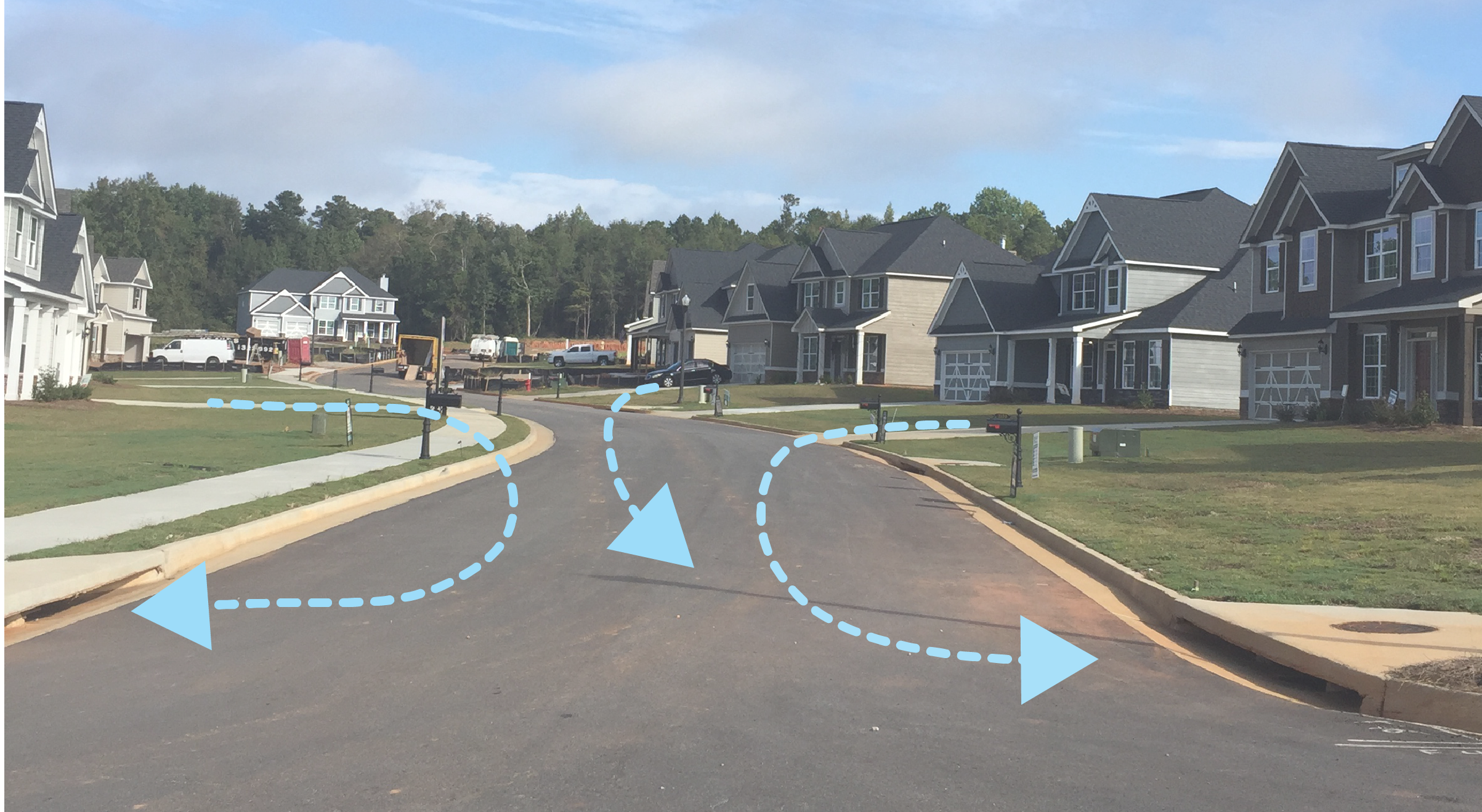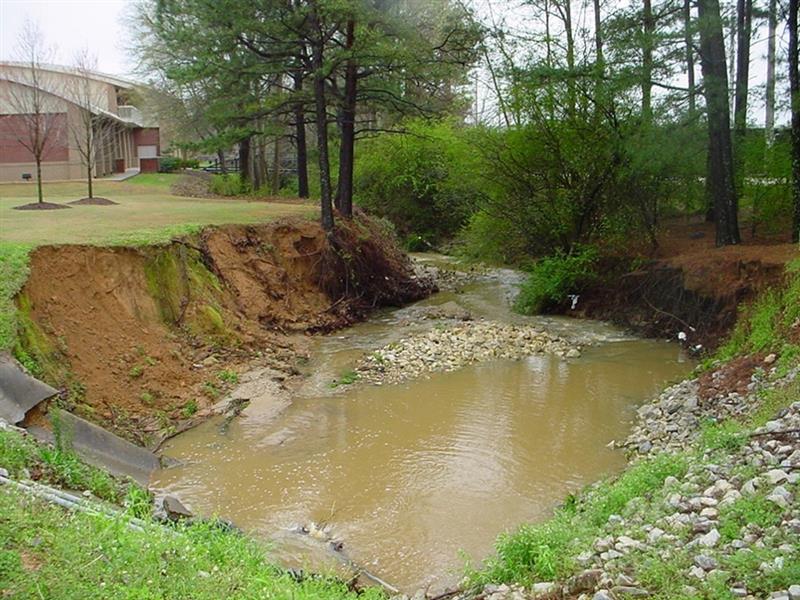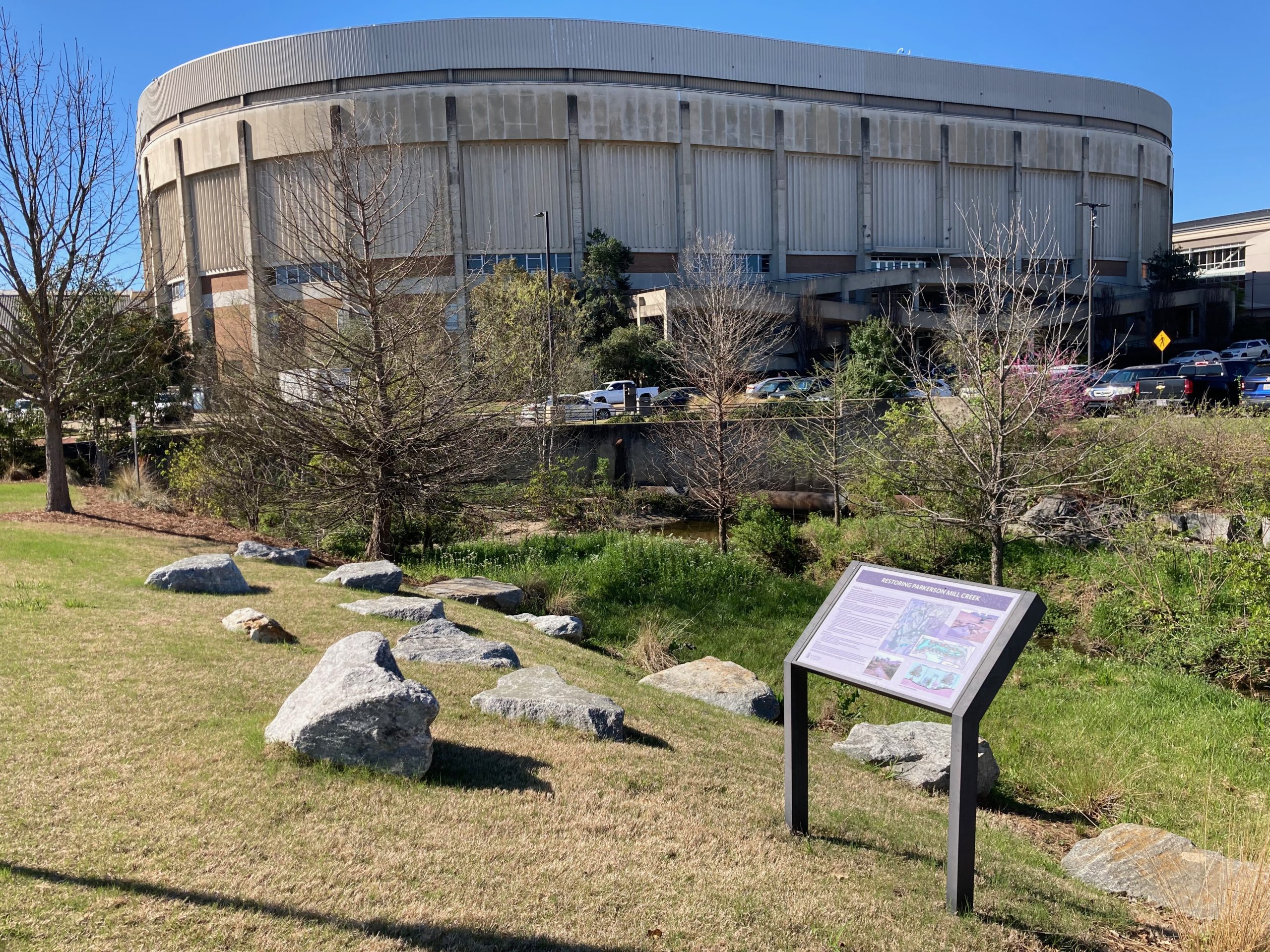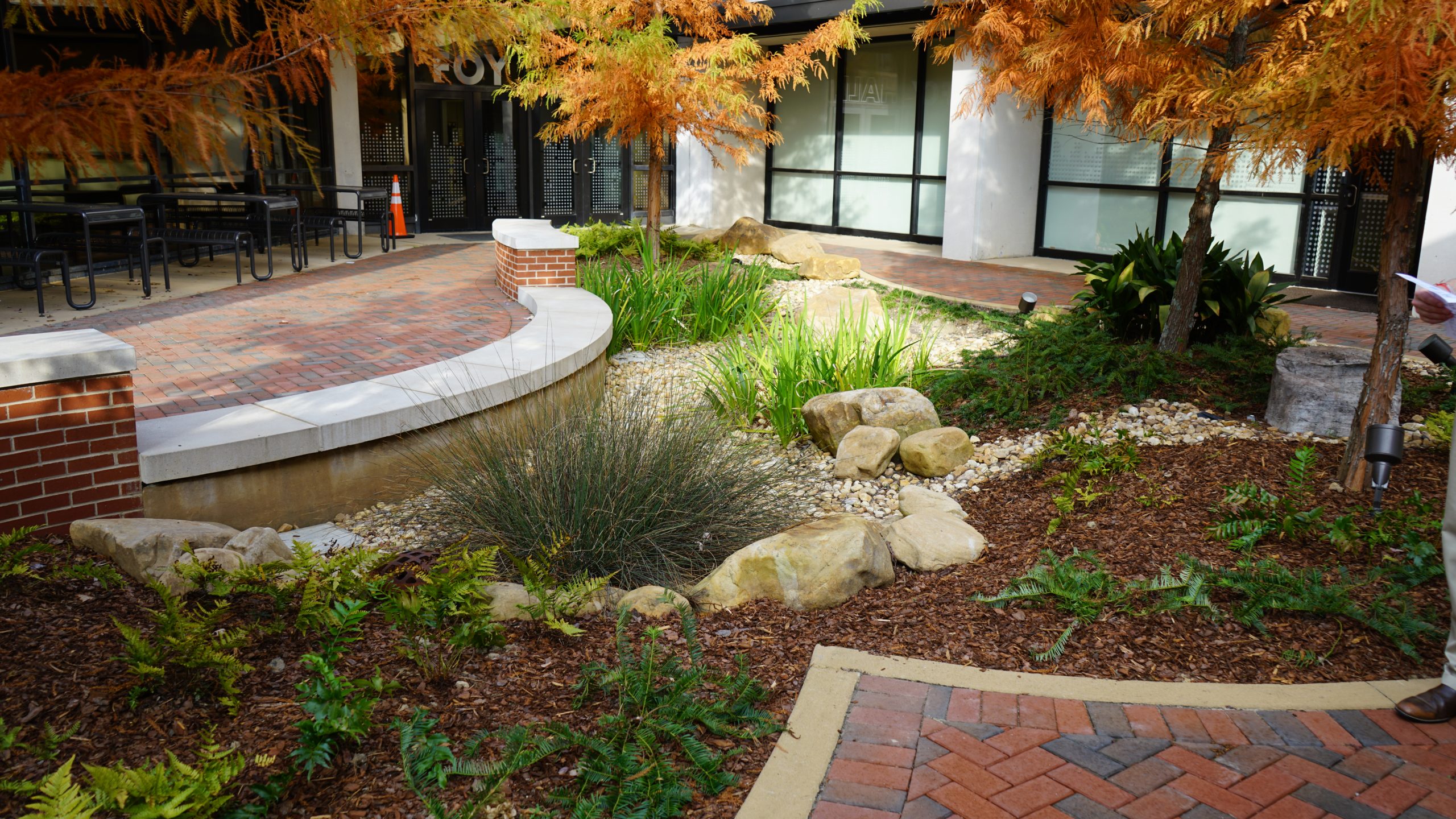Written By: Dr. Adam Newby, AUWRC
The Auburn University Water Resources Center (AUWRC) offers several water resource-related field experiences to enhance student learning. One such field experience is the Green Stormwater Infrastructure Walking Tour. Each semester, a limited number of tours are offered to interested professors and students.
How does Green Stormwater Infrastructure (GSI) differ from conventional stormwater infrastructure?
Conventional stormwater management systems (aka “gray infrastructure”) are designed to quickly divert stormwater away using drains and pipes and into a pond, stream, or other body of water. When it rains, the impervious surfaces of our urban environments don’t allow water to infiltrate into the ground. Instead, the water runs over these large areas, collecting pollutants and debris along the way, and is diverted to a single point. When directed to local waterways such as streams or creeks, the vast energy of such large amounts of stormwater directed to a single waterway causes flooding, erosion, and habitat disruption. As a result of these practices, the quality of our water resources is strained.

Conventional stormwater systems route water quickly into stormdrains which are then diverted to streams. Photo: Laura Cooley, AUWRC

Water rushing into local streams via conventional stormwater management systems can cause streambanks to erode. Photo credit: Adam Newby, AUWRC
Green Stormwater Infrastructure (aka Green Infrastructure, GSI) refers to practices that handle stormwater in urban areas in ways that protect, restore, or mimic the natural water cycle. Examples include rain gardens, bioretention cells, stream restoration, permeable pavement, etc. These practices can mitigate some of the impacts of urban development by reducing pollutants, debris, and the quantity of stormwater introduced to our local waterways.

The Parkerson Mill Stream Restoration Project on AU Campus. Photo Credit: Adam Newby
How is Auburn University using GSI to improve water quality on campus?
Auburn University recognizes the benefits associated with more sustainable water management practices. Parkerson Mill Creek runs through Auburn’s campus but faces numerous challenges to water quality. The university has implemented LID in many of its recent construction projects to help keep more stormwater on site. The university has also developed a watershed management plan that employs green infrastructure throughout campus. It’s important to implement GSI throughout a watershed to see true benefit.
What can I expect on a walking tour from the AUWRC?
Some of the GSI and LID projects that students can learn about on the walking tour include:
- Impervious pavers and stormwater retention at Samford Lawn
- Green roof at Brown-Kopel
- Rain garden at Foy Hall
- Bioswales at Mell Classroom Building
- Rain collection and pitcher plant bog at Davis Arboretum
- Stream restoration of Parkerson Mill Creek at Wellness Kitchen
Tours last for about one hour and can be catered to meet your schedule and learning objectives. If you would like to book a Green Stormwater Infrastructure Tour or any of our other student experiences for your class or group, please visit https://aaes.auburn.edu/wrc/awrc-field-experience-request and click on “Apply for a Student Experience.”

The rain garden at Foy Hall captures rainwater while also being an aesthetic centerpiece. Photo Credit: Eve Brantley

An example of how stormwater runoff can be filtered into a vegetated swale before being sent to a storm drain. Photo Credit: Eve Brantley.
